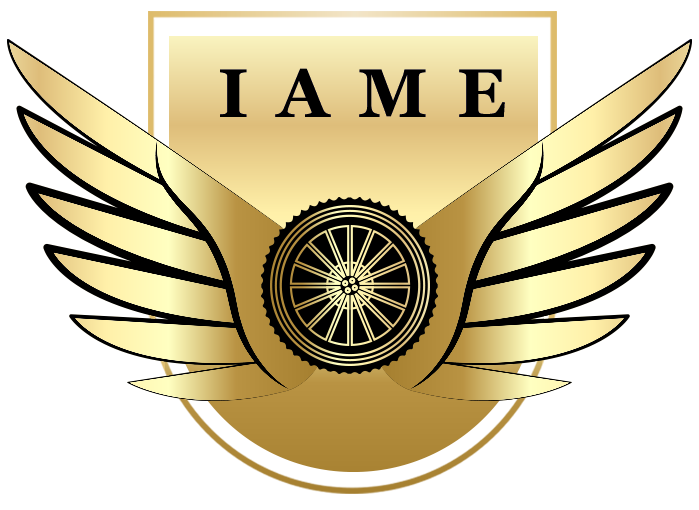Aircraft Maintenance Engineer – AME
Process Workflow

Process Workflow

Courses Overview
- AME’s are one of the most talented, hardworking and elite groups. They command high respect for their profession and draw a high salary. The job is not only rewarding but also satisfying.
- An Aircraft Maintenance Engineer (AME) is a licensed person who carries out all maintenance, repairs, and an overhaul, troubleshoots problems, conducts inspections and certifies aircraft as airworthy before take-off. The AME certification is a specialized licensing program for servicing and maintenance of aircraft and only those institutes approved by the EASA part 147 training in this field to prepare you for the AME exam conducted by the EASA 147 Approved. EASA Part 66 will issue an AME license. The license is widespread internationally and is recognized by the International Civil Aviation Organization (ICAO).
- Institute Aircraft Maintenance Engineering is collaborated with ATT Germany for B1.1, B2 and B1.2 Categories to conduct Aircraft Maintenance Engineering Course.
- The 04-years (08 semesters) full-time course in Aircraft Maintenance Engineering imparts in-house theoretical and airline/ MRO live practical training with all the latest tools, techniques and innovations including interactive sessions, personality development and aviation safety and security. All the theoretical part will be carried out on the campus. Out of total practical training, 70% of training will be carried out on live aircraft in the B1.1, B2 and B1.2 categories. The institute of Aircraft Maintenance Engineering has long-term agreement with local and international airlines and MRO’s, part 145 organizations to impart practical training to the students undergoing EASA PART 147 basic training in 3 years of AME Curriculum. After the successful completion of theoretical and practical training including the EASA examination (Semester Examinations) and Assessments, the “Certificate of Recognition” will be issued to the students.
- The maintenance of modern aircraft calls for a high degree of technical knowledge, competence, proficiency & integrity on the part of the concerned personnel. Tremendous responsibility lies upon the Aircraft Maintenance Engineers who are certifying the advanced and modern aircraft, managed by experienced crew trained at high cost and great care carrying the precious load of ever increasing number of passengers.
- Due to the open sky policy and globalization, there is a tremendous boom in the aviation industry in Pakistan and abroad. New operators and airlines are starting their operation and existing airlines are inducting new aircraft in their fleet.
General Information
The Part-66 License System
‘Part-66’ is the common European legal framework for certifying licensed aircraft engineers in EASA member states, like the Germany, France, and Greece. There are three categories:
- Category A – Permits the holder to provide limited certification of inspection and maintenance tasks or detect simple rectification.
- Category B – Provides the standard license for practitioners, divided into two subcategories: B1 (mechanics – engines, airframes etc.) and B2 (avionics – instrumentation, electrical/ electronic equipment).
- Category C – Permits the holder to issue certificates of release to service following base maintenance on aircraft.
AME Course Outline
Mathematics
This module covers the basic arithmetic, algebra and geometry that lays the foundation for equations to be used in the modules that will follow (physics, electrical fundamentals and electronic fundamentals).
Physics
The physics module provides knowledge of matter, mechanics, thermodynamics, optics and sound.
Electrical Fundamentals
This module provides the fundamental knowledge and basis for electronic fundamentals. The content includes electron theory, generation of electricity, capacitance, magnetism, inductance, transformers, generators and motors.
Digital Techniques
This module teaches data, logic circuits, microprocessors, fiber optics and digital aircraft systems.
Materials & Hardware
This module begins by covering the wide range of aircraft materials used, enabling students to apply their knowledge of atomic structure to understand the characteristics and properties of these materials. This module also provides an insight to components such as fasteners, pipes, bearings, gears, cables, and connectors.
Maintenance Practice
This module focuses on typical aircraft maintenance activities such as the assembly, inspection and testing of components as well as the associated tools, safety precautions and engineering standards.
Basic Aerodynamics
The basic aerodynamics module includes the atmosphere, aerodynamics and the theory of flight. Aerodynamic heating, area rule, factors affecting airflow in engine intakes of high-speed aircraft, Mach number, effects of sweepback on critical Mach number are all the part of this module.
Human Factors
Within a maintenance environment it is essential that human factors are taken into account. By understanding human performance limitations, social psychology, communication and the factors affecting performance, the likelihood of incidents attributable to human error are minimized. This module is compulsory for both B1 and B2 students.
Aviation Legislation
This module covers the aviation regulatory framework, certifying staff, aircraft certification and international requirements. It also includes approved maintenance organizations, air operations, certification of aircraft, continuing airworthiness, ETOPS, maintenance and dispatch requirements, all weather operations and Category 2/3 operations.
Aero Plane Aerodynamics, Structures & Systems
This extensive module provides explanations of fixed-wing aerodynamics and all the main systems found in modern civil aircraft: airframe, air conditioning, instruments, electrical power, equipment & furnishings, fire protection, flight controls, fuel systems, hydraulic power, ice & rain protection, landing gear, lights, oxygen, pneumatics, water & waste, onboard maintenance systems, integrated modular avionics (IMA), cabin systems and information systems. 11A is tailored for aircraft powered by turbine engines (applicable for those studying towards a B1.1 license). 11B is tailored for piston engine aircraft (applicable for those studying towards a B1.2 license).
Gas Turbine Engine
The substantial content within this module covers gas turbine engine fundamentals, performance, detailed explanations of each section of the engine and the supporting systems. Different types of gas turbine engines are considered and the module also includes installation, monitoring, ground running and storage.
Propellers
This module covers the fundamentals of propeller design, construction, pitch control, synchronizing, ice protection, maintenance and storage. This module also includes propeller performance and propeller types.
